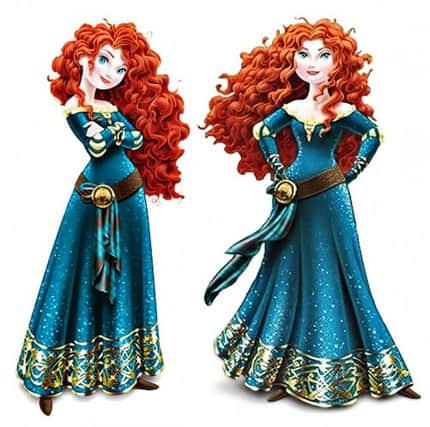Fiona McCade: Girls sold short by Merida makeover


The film is set in the Highlands and I love the fact that the Scots gave the studio such a challenge, but it should be no surprise because uniqueness, backbone and contempt for conformity are at the very heart of the film.
Merida’s untameable hair is nothing compared with the girl herself, who refuses to be married off and – with her trusty bow and arrow – fights for the right to decide her own destiny. Granted, things go very, very wrong along the way, but this is one princess who doesn’t need a prince to save her.
Advertisement
Hide AdAdvertisement
Hide AdIn fact, there is nobody mooning over Merida and, satisfyingly, the only boys of her age in the film do not want to marry her any more than she wants to marry them. It’s a hugely refreshing, romance-free zone, which speaks to the tomboy in every woman. Merida is a young, independent female on the brink of womanhood, who stands up tall for all those girls who don’t wear pink, don’t brush their hair and don’t care who knows it. She’s a one-off.
At least, she was. As of this week, Merida has joined the pantheon of Disney Princesses – because Disney owns Pixar – and has taken her place next to the exalted likes of Cinderella, Snow White, Ariel the Little Mermaid and Rapunzel. However, to make this Celtic hoyden acceptable in the Princess club, Disney has seen fit to make a few changes.
Disney Princess Merida is always smiling – unlike the real thing, who spends most of the first half of Brave fuming at all and sundry. Her once-crazy curls appear to have been treated with a super-strong dose of Frizz Ease. Her adolescent figure has softened into remarkably womanly curves, with the obligatory Disney tiny waist, and she’s gone from a 32A to a 34C overnight.
Her round, childlike eyes have been given a good lashing of mascara, so now they’re positively sultry compared with the way they used to glare at anybody who got in her way. Gone is the woollen dress – so practical for dashing through forests after bears – and in its place is a silky, glittery, off-the-shoulder number. Gone is her killer archery kit; now she just looks cute and coy. This is no proud princess of the glens; this is Debra Messing in a Revlon ad. Go another couple of steps in the wrong direction and she’ll be Jessica Rabbit.
It’s a great shame that Merida has been tamed. She’s been made-over in order to fit into the line-up of lovelies, but this misses the whole point of this uncompromising character. She didn’t fit in – and she didn’t want to. Good for her, but not so good for Disney, it seems.
There was no reason for Merida to be forced to grow up in this clichéd, unimaginative way. Now she’s just another damsel, swishing her skirts and simpering. She didn’t need to be prettier and she certainly didn’t need to be older. She was fine as she was. This is sending out a really dodgy message to our daughters.
It’s saying, OK, little girl, you can be different, you can be a maverick and break the mould; you can be as quirky as you like, but being accepted is what’s important and, one day, you will have to become like all the others. If you want to grow up to be one of the popular girls, get slim, get smooth and start smiling. That’s the ultimate goal.
Merida, the bonny, bad-tempered lass who was free as a bird, is now a prim and proper laydee, and it makes me shudder.
Advertisement
Hide AdAdvertisement
Hide AdIf you don’t think this is important in any way, let me direct you to this advertisement I found for the new, “improved” version of Disney’s latest Princess: “The Merida doll brings the character to life in a beautiful, sparkling fashion inspired by the movie. Perfect for girls to re-enact their favourite scenes.” So far, so anodyne; so typically Disney.
Then comes the real arrow in the heart of individualism: “Doll cannot stand alone.” Says it all, really.